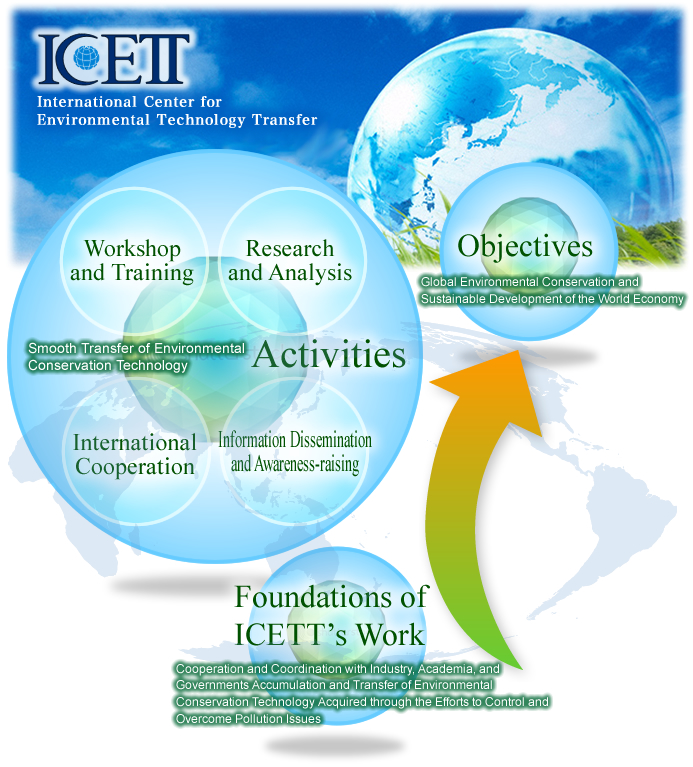Main content starts here.
Update:April 1, 2010
Background and Objective
Rapid growth in our social and economic activities has dramatically changed the global environment, giving rise to serious and urgent problems such as global warming, depletion of the ozone layer, acid rain, desertification, and ocean pollution.
Global environmental issues should not be tackled or solved only by single nations or regions but on a global scale. The United Nations Conference on Environment and Development (UNCED), known as the Earth Summit, held in Brazil in June 1992 established an international consensus on action plans for conservation of the global environment, and also served as the starting point to substantially implement actions to pursue sustainable development.
Meanwhile, Japan is expected to make full use of the experience and technology it has accumulated in coping with its own environmental issues, collaborating with other countries to make a positive contribution to the world.
Against this background, ICETT was established through the cooperation of industry, academia, and government to serve as an organization to facilitate smooth transfer of Japan's environmental conservation systems in order to contribute to the conservation of the global environment and the sustainable development of the world economy.
ICETT seeks to transfer Japanese or international environmental conservation technology to other countries in order to take the initiative in solving the environmental issues worldwide, as well as in our own country, thus helping conserve the global environment and enabling sustainable growth of the world economy.
To achieve this, ICETT carries out various activities to conserve the environment, such as “training and technical guidance”, “research and development”, “surveys and provision of information”, and “dissemination and public awareness”, to effectively promote the transfer of those technologies that address the particular conditions in each country.








